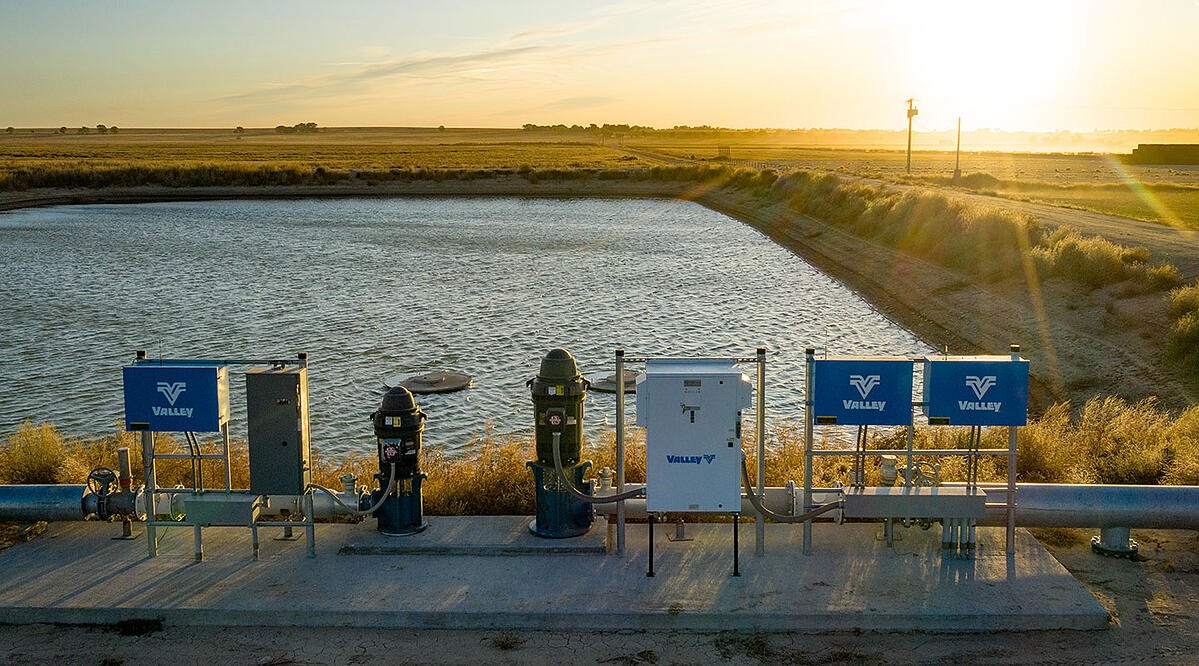Editor’s Note: A slightly different version of this article originally ran on progressiveforage.com.
I may be biased when I say this, but because I grew up in agriculture, I know it’s the very best industry there is.
How important is agriculture to our way of life? When President Ronald Reagan was putting together a farm bill to help American farmers in the 1980s, he said, “My guiding thought throughout our efforts to put together a truly helpful farm bill has been: We’re nothing without the farmers. They’re the backbone of this country. And everything we do to help them helps our country and its future.”
I believe President Reagan’s quote to my core, but there is one element he didn’t address: water. As important as agriculture is to America, that’s how important water is to agriculture. Without water, farming and ranching is practically impossible. Recognizing that water is a precious resource which must be conserved for future generations, we also work hard to be as efficient as possible with water applied for irrigation.
The Irrigation Association establishes standards to make sure irrigation specialists are designing the most efficient systems. There are many factors that go into making sure an irrigation system works as efficiently as possible, but I will focus on three of the biggest ones now.
One integral part is the sprinkler package designed for the center pivot. Water has to be conveyed to the pivot via some sort of pump station for the correct application. Lastly, there has to be a pivot to bring all the components together. Maintaining all of these components is necessary to ensure the system works as designed, conserving water and other inputs, and increasing profit margin for the end user.
Pivots
Logically, the most important part of an irrigation system is a center pivot because it houses the sprinkler package and conveys the water from the pump station down the length of the spans to the sprinklers. Keeping up with maintenance on the pivot is crucial to a long life. Valley center pivots are designed and engineered to be the longest lasting and most durable in the industry, but all pivots require maintenance sometimes. There are many moving parts on a pivot, so keeping it moving is important. If it can’t run, water can’t be applied to the crop – it’s as simple as that.
If the farm is in a harsh winter environment, winterizing a pivot is especially important for longevity and reliability. Your local Valley dealer will be able to help you, or you can get a head start by reading this blog. One thing commonly overlooked is checking tire pressure prior to irrigation season. This can help prevent a flat tire keeping the pivot from doing its job in the heat of growing season. Preventative fall maintenance is also very important. Valley dealers can put a package together to help show what parts should be checked and potentially replaced to avoid a breakdown during the season.

Pumps
Another piece of the water efficiency puzzle is conveying water from the source to the center pivot. In some situations, the irrigation pump may not work properly or could be grossly oversized because the hydraulics were not built to specification. As horsepower increases, kilowatt-hours increase, so the goal would be to design the system with the most efficient hydraulic/pump combination to save on operational costs. Plus, as pump life increases, normal wear and tear can cause its efficiency to decrease.
Pumping “sand” can also be detrimental to the long-lasting efficiency of a pump. An irrigation pump will wear down because, over time, the impeller inside the bowl of the pump will wear down and become less efficient. Keeping an eye on elevations of the water level can make a big difference on a pump as well. Making sure the pumping level is the same as when the pump was designed is vital, or it will not run as efficiently. There are manuals online for maintaining pumps and motors, but with open-drip pumps, watch for one thing in particular during the season: Make sure there are drops of water coming through the packing to make sure the pump shaft stays lubricated.
One more thing: Keep an eye on pressures at pump stations or pivots through the years and record your findings. This can help identify when a pump station could be losing some of its efficiency, thus costing more money to operate on a yearly basis.
Sprinklers
Of course, getting water to the actual crop is part of efficient water use. Saving water can save money, increasing profit margins and completing the goal of doing more with less. That’s where sprinklers come in. Achieving “more crop for the drop” is dependent on making sure the sprinkler package is up to date and uses the latest technology for water distribution.
Technology is a bigger concept than just the latest cellphone – it is defined by Webster as “the practical application of knowledge.” Sprinkler companies have invested a lot of time and money to make sure farmers have access to the most efficient sprinkler technology. There are mobile labs that can check sprinkler efficiencies, and your Valley dealer can run new sprinkler charts.
Each of these facets of an efficient irrigation system is necessary to make sure you have a profitable season on the farm, but this has only been an overview. Talk to your local Valley dealer to get all the details.
Agriculture is important to the American way of life, and water is important to agriculture. We can’t have one without the other, so let’s all look for ways to conserve both.